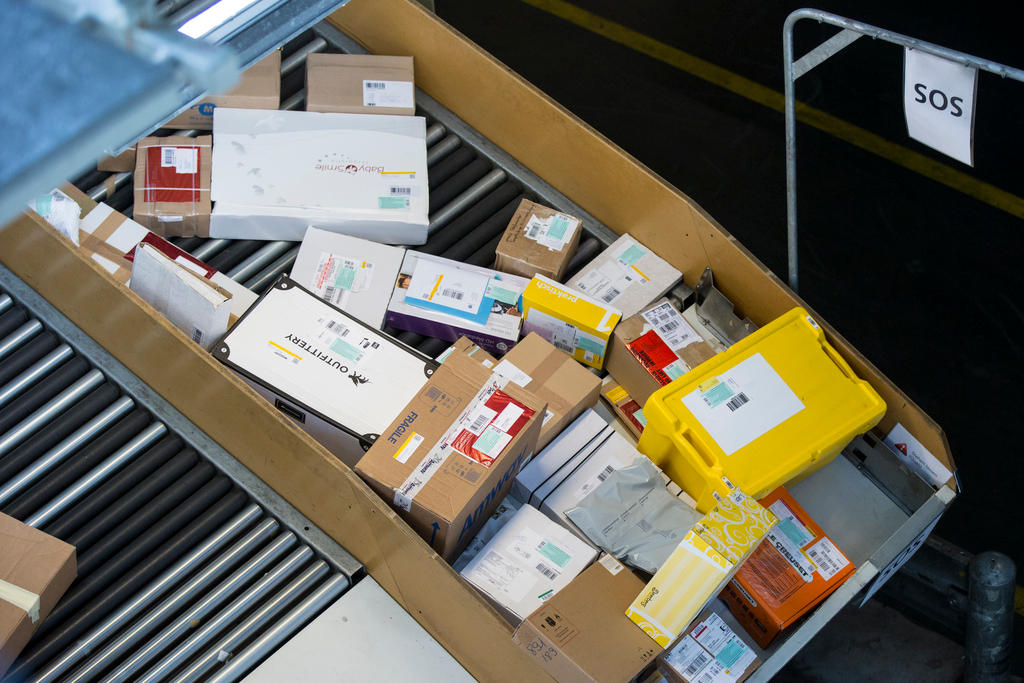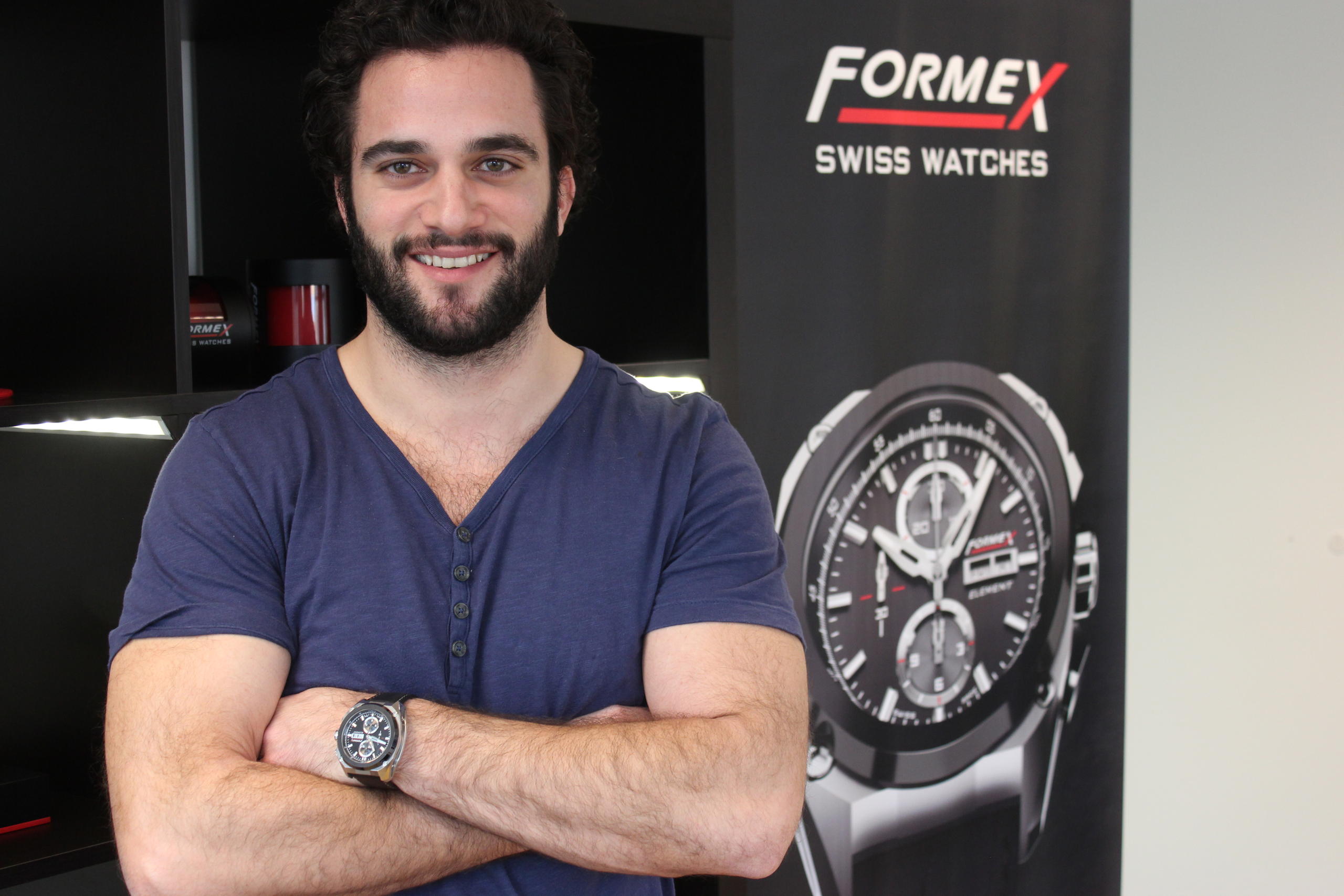
Luxury watches at your fingertips

In an industry where luxury boutiques equate with high-end customer service, the internet was almost a dirty word among Swiss watchmakers until a few years ago. Today, the most prestigious brands are hopping on the e-commerce train to boost business.
In the last few months, barely a day has passed without a watch company doing some online sales promotion. Whether on their own platform or via third-party websites, Swiss watchmakers have now made online distribution a priority.
While some watchmakers remain totally impervious to this sea change, the consensus is that selling luxury goods online is no longer a sacrilege at a time when e-commerce is exploding, especially in the United States and China.
Even a brand like Roger Dubuis, where the average luxury timepiece costs between CHF60,000-80,000 ($63,000-83,000) and, is examining its own online sales strategy.
In cultivating that feeling of exclusivity associated with their products, watchmaking companies have always emphasized how the atmosphere, the experience and the service offered in a boutique were integral to a brand’s prestige.
So, are we witnessing a minor revolution in the way watches – the pride of the Swiss export industry – are bought and sold? To find out more, swissinfo.ch spoke to three watchmaking influencers affected in one way or another by this phenomenon: the spokesperson of the biggest watchmaking group in the world, a young entrepreneur who chose to go 100% digital and a professor of watchmaking marketing.
Swatch spokesman
As was the case with the arrival of smart watches, Swatch puts into perspective what it calls the “media packaging” surrounding online watch sales. The largest watch group in the world has had its own e-commerce platform since 2001. “So, we are the pioneers in this field,” says spokesperson Bastien Buss. He plays down the e-commerce transition as “nothing new”.
What the spokesperson does not say, however, is that Swatch has so far been very cautious in this arena: only entry and mid-level products were sold online, and only in markets where there are few distributors or stores. But today, most of Swatch Group’s 18 brands have taken the plunge, including the high-end products.
Omega, the brand bringing in the most group turnover at over CHF2 billion a year, attracted a lot of interest last year with the sale of a limited edition Speedmaster model on social media, swiftly followed by the announcement of the launch of an Omega online shop in the US.
As the second largest Swatch Group brand in terms of turnover, Longines has done the same in several countries, including China and the US. The brand also has a range of watches on Hodinkee, a key watchmaking platform for the online sale of timepieces across the Atlantic.
Many other similar initiatives have been launched, or will be soon, by the group’s different brands, Buss emphasises.
While Richemont group – which owns Cartier, IWC and Jaeger-LeCoultre – appointed a Chief Technology Officer at the beginning of the year, the brands within Swatch Group, are independent and decide on their own online strategy, says Buss. Under certain conditions, authorized retailers and franchisees of the group’s brands also have the option of developing their own sales website. In Switzerland, this includes the Lucerne watchmaker Bucherer, which is investing heavily to position itself in a field that has been somewhat neglected until now.
Formex CEO

Located in a former machine tool factory in Biel, Formex is just 100 metres from Omega’s dazzling new factory. On an icy February morning, CEO Raphael Granito is one of three people inside the HQ. Wearing a tight-fitting T-shirt, and sporting a full beard and relaxed smile, the 30-year-old entrepreneur looks like a typical start-up boss. But Formex is already a well-established company. Founded in 1998, the brand is best known to extreme sports fans.
Formex has been a curiosity for some time because of its radical repositioning in the digital world. “We are the first – and so far the only – Swiss watch brand to have decided to only sell our watches online,” explains Granito.
When he arrived as the head of the company in 2015, Granito, as an international management school graduate, quickly understood that it would not be easy to relaunch the struggling brand within the traditional sales network. “For a small brand like ours, it’s very difficult to position yourself among independent retailers,” he says.
He turned to selling online, which had many advantages, including cutting the price of his watches by 50%. “This was made possible by eliminating the middleman and their margin.”
Adjusting products to a CHF350-1,500 price range should enable the company to reach a wider audience, even if Formex is still mainly targeting connoisseurs. “Our customers want to buy a quality watch at an affordable price. You do not buy a Formex as a status symbol,” says Granito.

More
Try on a new Swiss watch – virtually
A year after taking this 100% digital turn, Granito is optimistic about his decision. Sales grew by 30% and customers are generally satisfied with the new sales platform. The biggest challenge of selling online is that the customer does not have a clear idea of what the watch will look like on their wrist. To get around this and to avoid too many product returns, Granito and his small team developed an app that allows the user to test the timepiece virtually. “It’s more than just a marketing gag. Several leading brands are interested in our app,” he says.
Watchmaking professor
It’s difficult to quantify the true extent of watch sales on the Internet. “Brands are very cautious and rarely communicate these numbers,” says François Courvoisier, dean of the institute of watchmaking at the University of Applied Sciences and Arts in Western Switzerland (Arc School – Neuchâtel, Bern, Jura).
According to a study by consulting firm Bain & Company, online sales of jewellery and watches totalled nearly 3.4% in 2016 (€1.8 billion). But this share could expand rapidly and reach 5-10% by 2020. The firm Deloitte surveyed Swiss watch industry executives about the sales channels they would prioritize in five years. The findings were clear: traditional outlets could struggle in the face of growing digitalization.
More high-end watchmakers are becoming interested in selling timepieces online, says Courvoisier. “Some customers are ready to take more risks. This is particularly the case in China, where you can order virtually anything on your smartphone. Buying luxury items on the web is going to become commonplace,” he says.
Two consecutive years of recession for watchmaking (2015 and 2016) have also prompted many industry players to look for alternatives to their traditional sales channels to sell surplus stocks.
In the future, the line between traditional and online sales will blur, says Courvoisier. “Brands will have to adapt and offer various options to make a sale.”
The same is true for traditional retailers, who will have to make this change. “At the moment, almost a third of shops do not even have a website or their own e-mail address. They have an interest in getting up to speed if they do not want to simply disappear,” says the professor.
And then there’s always the exception to the rule: Rolex, the best known and best-selling Swiss watch brand in the world. Online sales are definitely not part of the brand’s current strategy. “Rolex is one of the most discreet and conservative brands when it comes to its business model. It will be the last one to launch into an adventure, and then, only when it is convinced that this new distribution channel will significantly increase sales,” says Courvoisier.
You can contact the author of this article on Twitter: @samueljabergExternal link
Translated from French by Jessica Dacey

In compliance with the JTI standards
More: SWI swissinfo.ch certified by the Journalism Trust Initiative





























You can find an overview of ongoing debates with our journalists here . Please join us!
If you want to start a conversation about a topic raised in this article or want to report factual errors, email us at english@swissinfo.ch.